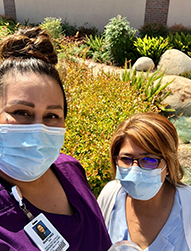Highlights

By 2023, PHI’s CA Bridge program supported over 80 percent of California’s hospital emergency room departments in offering medication for addiction treatment, access to substance use navigators and connections to ongoing care in the community.
276 hospital EDs in CA offer medication for addiction treatment, access to substance use navigators, and connections to ongoing care
109K encounters where the patient was seen for SUD in 2023
31K encounters where the patient was administered or prescribed buprenorphine in 2023
37.3K encounters in 2023 where the patient was discharged with a follow-up appointment
-
Focus Areas
Alcohol, Tobacco, Drugs & Mental Health -
Issues
Workforce Development -
Strategic Initiatives
Opioids
More than 1.1 million people in California have been diagnosed with a substance use disorder and many patients utilize hospital emergency departments for their care. Hospitals are uniquely positioned and are an underutilized resource in treating substance use disorders and the opioid crisis.
The Public Health Institute’s CA Bridge program offers a successful and evidence-based Medication for Addiction Treatment (MAT) model, leveraging 24/7 access to care in hospital emergency departments and medical wrap-around services, along with the following key elements: providing substance use disorder patients with immediate access to medication for addiction treatment and connecting patients to a substance use navigators and to ongoing care in the community.
Through a harm reduction approach, CA Bridge and its partners have been able to achieve unprecedented change in hospital emergency departments across California. A broad range of resources and guidance provided by PHI allowed CA Bridge to rapidly expand their model across California and into other treatment settings.
Since the program’s inception in 2018, CA Bridge has supported 276 of the state’s 331 hospital EDs in offering medication for addiction treatment, access to substance use navigators, and connections to ongoing care in the community.
In 2023, CA Bridge reported the following outcomes:
- 109,000 annual encounters where the patient was seen for a substance use disorder
- 31,000 annual encounters where the patient was administered or prescribed buprenorphine
- 37,300 annual encounters where the patient was discharged with a follow-up appointment
CA Bridge achieved these results by growing a movement for universal access to addiction treatment. Since its inception, the program has trained 2,086 medical providers, navigators, and hospital staff. By focusing on harm reduction and connection, hospital emergency departments who utilize the CA Bridge MAT model are better able to reach patients that may have otherwise been missed.
Work With Us
You change the world. We do the rest. Explore fiscal sponsorship at PHI.
Support Us
Together, we can accelerate our response to public health’s most critical issues.
Find Employment
Begin your career at the Public Health Institute.
